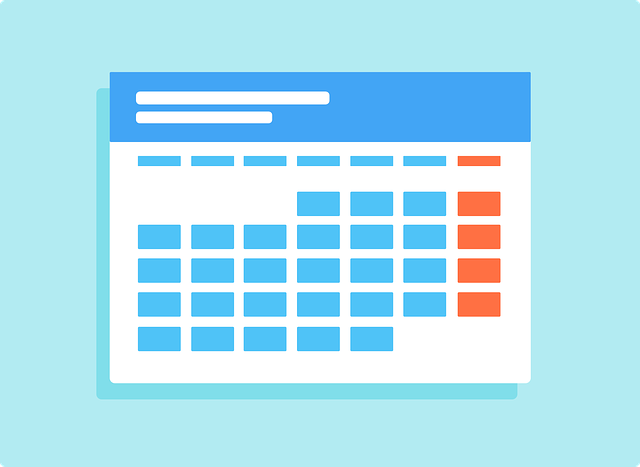Patient Appointment Scheduling: Automated systems revolutionize clinic operations by streamlining processes, reducing manual effort, and improving efficiency. Key benefits include fair resource allocation, real-time updates with EMR integration, and enhanced no-show management. Implementing user-friendly software tailored to clinic needs minimizes wait times, boosts patient satisfaction, and allows seamless scheduling through various channels. Continuous improvement through KPIs and data analytics maximizes system benefits.
Patient appointment scheduling is a complex task, often leading to inefficiencies and frustration for both patients and clinic staff. This article explores how an automated scheduling service can revolutionize clinic operations. We delve into the challenges of traditional scheduling, highlighting the benefits of automation, from reduced no-shows to improved patient satisfaction. Key features of efficient systems are examined, followed by a step-by-step guide to implementation. Learn how seamless scheduling enhances the patient experience and discover strategies for continuous improvement.
- Understanding the Challenges of Patient Appointment Scheduling
- The Benefits of Automating Scheduling Processes
- Key Features of an Efficient Patient Appointment Scheduling System
- Implementing the System: A Step-by-Step Guide for Clinics
- Enhancing Patient Experience through Seamless Scheduling
- Measuring Success and Continuous Improvement Strategies
Understanding the Challenges of Patient Appointment Scheduling

Patient appointment scheduling is a complex task that can significantly impact clinic efficiency and patient satisfaction. Traditional methods often involve manual coordination between patients, healthcare providers, and administrative staff, leading to inefficiencies and potential errors. This process can be time-consuming, prone to human mistakes, and fail to accommodate the dynamic nature of patient needs and availability.
The challenges are further exacerbated by factors such as no-show appointments, last-minute cancellations, and the need for seamless integration with Electronic Medical Records (EMR) systems. An effective solution must address these issues directly, ensuring that scheduling is automated, accurate, and adaptable. With the right appointment software, clinics can streamline their processes, minimize administrative burdens, and maximize patient satisfaction through improved access to care.
The Benefits of Automating Scheduling Processes

Automating scheduling processes offers a multitude of advantages for healthcare clinics, leading to improved efficiency and enhanced patient experiences. One of the key benefits is the reduction of manual effort required to manage patient appointments. Traditional methods often involve cumbersome paper schedules or basic digital calendars, which can be time-consuming and prone to errors. With automated scheduling software, these tasks become seamless. The system can handle multiple patient requests simultaneously, ensuring fair and efficient allocation of resources.
Furthermore, integrating EMR (Electronic Medical Record) scheduling with existing systems allows for real-time updates and improved data management. This integration enables healthcare providers to access patient history, preferences, and allergy information promptly during appointments, leading to better decision-making. Efficient no-show management is another significant advantage, as automated systems can send out reminders, reduce cancellations, and optimize the clinic’s schedule by filling vacant slots with new patients or rescheduling existing ones.
Key Features of an Efficient Patient Appointment Scheduling System

An efficient patient appointment scheduling system is a cornerstone for any clinic aiming to optimize operations and enhance patient experiences. Key features include user-friendly interfaces that allow staff to easily manage and update patient appointments with just a few clicks. Integration of an appointment software enables seamless calendar syncing across multiple devices, ensuring everyone involved has access to real-time availability.
Additionally, robust no-show management tools play a vital role in minimizing revenue loss and maximizing clinic efficiency. These systems can automatically send reminders to patients, track their responses, and reschedule as needed. Scheduling automation further streamlines processes by generating appointment slots based on doctor availability and patient preferences, reducing manual effort and minimizing wait times. Such features collectively contribute to improved clinic productivity and higher patient satisfaction levels.
Implementing the System: A Step-by-Step Guide for Clinics

Implementing a patient appointment scheduling system can transform clinic operations for the better. Here’s a step-by-step guide to help practices seamlessly integrate this technology, enhancing both efficiency and patient satisfaction.
1. Assess Needs: Begin by evaluating your clinic’s current scheduling methods and identifying pain points. Do you struggle with manual appointment booking, overbooking, or last-minute cancellations? Understanding these challenges will guide your choice of software.
2. Select the Right Software: Choose an appointment software that suits your clinic’s size and speciality. Look for features like EMR scheduling integration, calendar integration healthcare functionalities, and user-friendly interfaces designed for efficiency.
3. Data Migration: Ensure a smooth transition by migrating existing patient data from manual records to the new system. This step is crucial for maintaining accurate patient profiles and continuity of care.
4. Staff Training: Educate your team on the software’s functionality. Comprehensive training sessions will ensure staff members can effectively use the system, minimizing errors and maximizing its benefits.
5. Pilot Testing: Before full-scale implementation, conduct a trial run with a small patient group. Gather feedback from both staff and patients to identify any teething issues.
6. Full Rollout: Once you’ve ironed out any kinks, fully implement the system across your clinic. Promote the new scheduling method to patients through various communication channels for a seamless transition.
Enhancing Patient Experience through Seamless Scheduling

In today’s fast-paced world, patients appreciate convenience and efficiency when it comes to managing their healthcare appointments. Seamless patient appointment scheduling is a game-changer that can transform the typical clinic experience into a more pleasant and stress-free journey. By implementing automated scheduling systems, healthcare providers can offer their patients a streamlined process that fits seamlessly into their busy lives. This technology allows for easy booking, rescheduling, and cancellation of appointments through various channels like websites, mobile apps, or even simple phone calls.
Furthermore, efficient scheduling automation reduces no-show instances by sending reminders and notifications, ensuring better utilization of clinic resources. Calendar integration healthcare solutions enable patients to sync their personal calendars with the clinic’s system, providing real-time availability and preventing double-booking. This level of organization enhances patient satisfaction, as they can plan their schedules accordingly, minimizing waiting times and maximizing their time with healthcare professionals.
Measuring Success and Continuous Improvement Strategies

Measuring success is a critical component of any efficient patient appointment scheduling system. By integrating EMR (Electronic Medical Record) scheduling and calendar integration healthcare tools, clinics can track key performance indicators (KPIs) such as average wait times, no-show rates, and appointment completion percentages. These metrics provide valuable insights into the effectiveness of the new system and highlight areas for improvement.
Continuous improvement strategies are essential to maximizing the benefits of automated scheduling software. Regular reviews of data should prompt adjustments to workflows and policies. For example, if high no-show rates are observed, targeted communication strategies could be implemented to improve patient engagement. Similarly, leveraging the appointment software’s analytics capabilities can help identify trends and patterns, enabling healthcare providers to anticipate demand and optimize resource allocation.
